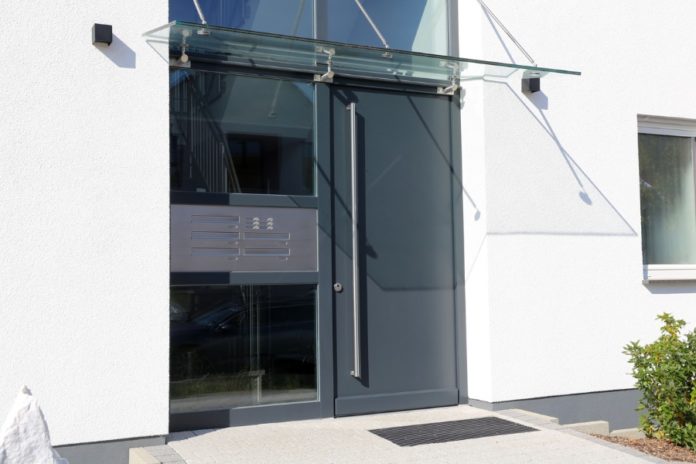
Melanie Lougee
Head of Employee Workflow Strategy, ServiceNow
While organizations have long prioritized creating great digital experiences for their employees, the past 20+ months have intensified the need to deliver linked, personal, consumer-grade ways of working and connecting.
To ensure that all employees have consistent access to information, support and growth opportunities, companies are rethinking, redesigning and revamping their systems and processes with a hybrid-first, employee-centric mindset.
Here's how companies are rethinking, redesigning and revamping systems and processes with a hybrid-first, employee-centric mindset. #HR #HRTech @ServiceNow Share on XAs a result, we’re now seeing an increase in companies creating a “digital front door” – a single destination that connects employees to the departments and services they may interact with in a day, including IT, workplace services, legal, procurement and more.
A new take on the static employee intranet, the digital front door should go beyond basic service delivery and instead offer employees a dynamic portal for engagement, communication and personal development.
Enabling Two-Way Communication
While organizations have navigated the new realities of work as effectively as they can, the hybrid workplace is still constantly evolving.
As the situation continues to evolve, organizations must be able to reach their employees, regardless of where they are working, with pertinent information and company resources, news and updates. And as much as possible, these communications should be personalized by role, geography, level, etc., so employees get the information that is most relevant to them and important messages aren’t lost in an unopened sea of irrelevant corporate spam.
Companies should also consider how the digital front door can empower all employees to share feedback, ask questions about their experience and participate in employee forums and discussions. This ensures that communication is a two-way street and that they know their voices are heard, regardless of their physical location. Two-way communication is even more important for flexible and hybrid workers who make frequent location and schedule changes.
For example, consider the onboarding process. Many companies have adjusted their onboarding plans to meet the new realities of hybrid work, ensuring that employees are set up for success and that organizations can effectively communicate with new hires even before day one. Employees may be doing more virtual training videos and team meetings vs. grabbing lunch or coffee in-person.
In a remote environment, it may be harder to see if a new employee is struggling during or after the onboarding process. Listening tools embedded into the digital front door allows employees to deliver feedback on the orientation process immediately so managers can quickly understand what went well and what they need to change. Being alerted to delays within a structured onboarding process provides the opportunity to improve even before feedback is requested.
Improving the Manager Experience

Within a very short period, managers have had to embrace and implement new processes to keep their teams supported and engaged from wherever they work, which has been a challenge. In a Gallup poll tracking self-reported burnout during the pandemic, the percentage of managers who reported being burned out “very often” or “always” rose more than other employee groups in 2021.
The digital front door can play a key role here as well, helping managers navigate their newly hybrid teams. By giving managers a single place to communicate, develop personalized growth plans and provide learning opportunities, they can engage their teams while minimizing their own burnout.
We also know that training and upskilling opportunities are critical to attracting and retaining talent amid the Great Resignation. Digital workflows can augment the manager’s role by providing learning materials to an employee in their normal flow of work and making these resources available on-demand, so the learning experience is more flexible and organic.
Meeting Employees Where They Are
Many employees agree that a benefit of hybrid work is the ability to work when, where and however they want. The digital front door should support this by allowing employees to access resources from their desks or on the go via mobile. That may seem like an obvious feature today, but you’d be surprised at how many organizations rely on disparate support and knowledge tools that lack native mobile access.
Ease of integration is also critical in this instance. Historically, the employee experience has been bogged down by friction – there are too many silos, manual processes and legacy software systems that don’t work together. Point solution tools, even if they individually have great UI’s, can deteriorate overall employee experience and hinder adoption because they all behave differently. Okta found in 2020 that the average number of apps deployed by organizations increased 21% from 2016 to 2019. The ecosystem complexity has increased, exacerbating the current challenge.
The digital front door should be designed with integration in mind to simplify access points and harmonize the right transactions for a given domain or process to create a more flexible, seamless experience for end users.
Leveraging AI to Learn and Improve
The digital front door should also be a living, breathing destination that is constantly learning about the new challenges employees are facing, what they are focused on and how to improve their experience.
Greater intelligence through the use of AI is key to what makes the digital front door so powerful. By understanding who employees are and what they need, the digital front door can provide personalized content based on location, role and job type. The more it’s used and leveraged, the smarter it gets.
For example, AI can help detect trends in employee feedback so companies can improve their overall processes and communication with the workforce. Thinking about onboarding again, if HR sees that many of the employees who go through a hybrid onboarding process deliver more negative feedback than those who have in-person onboarding, it will know something needs to change.
A Front Door to the Future of Work
Companies in every industry and of all sizes are still identifying and refining what the new world of hybrid work will look like for them. Regardless of how hybrid work evolves, organizations should adopt tools that enable them to better engage, support and communicate with their employees, regardless of where they are working and no matter the circumstance. As employees venture into the future of work, the digital front door will serve as their home base.
Melanie Lougee is the Head of Employee Workflow Strategy at ServiceNow. She has more than 20 years of experience working in HR technology and HR service management, including four years as an analyst at Gartner, where she provided advisory services to C-level and leadership teams on technology, transformation, change management and HR communications strategies. Prior to Gartner, Melanie held various strategy positions at Oracle (and, formerly PeopleSoft) and enterprise software provider Infor.
Image: iStock














